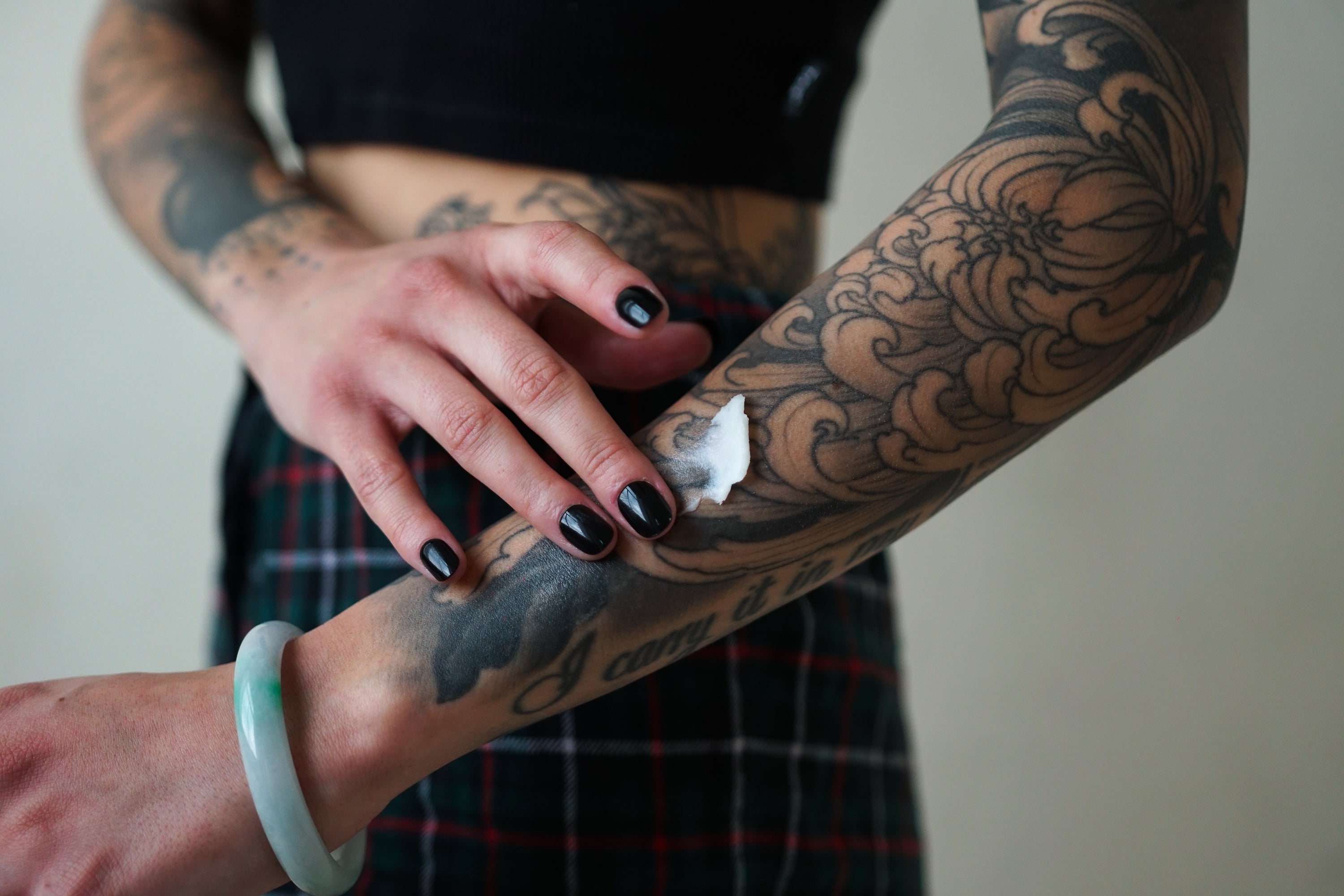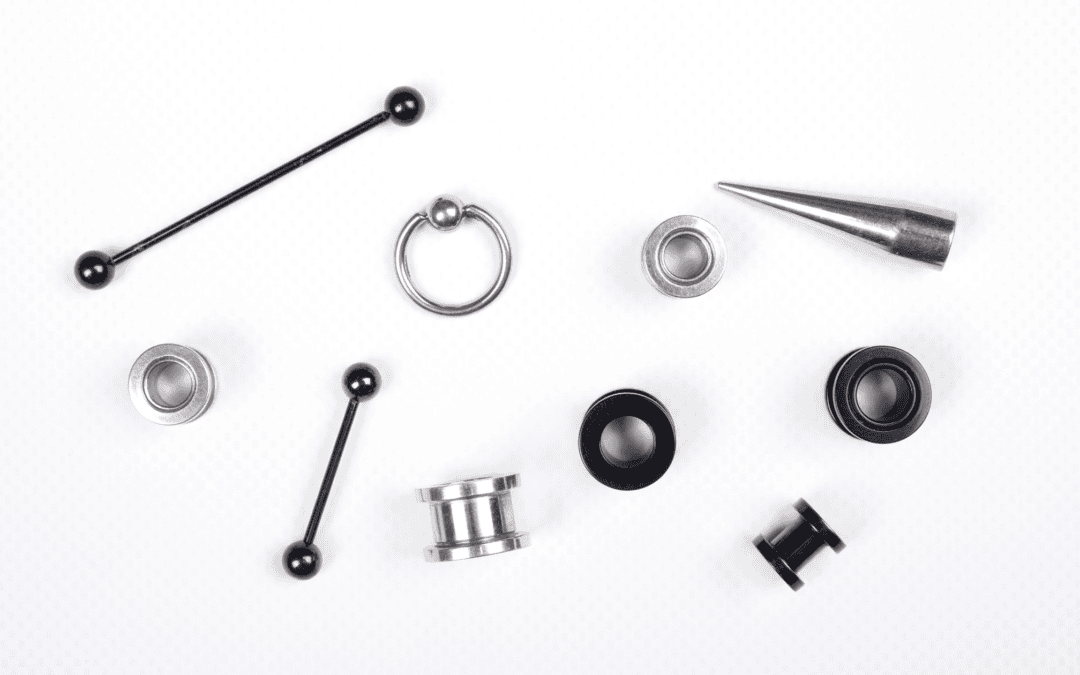Tattoos and piercings are popular forms of body modification for personal expression. However, the healing processes for these two forms of body art differ significantly. Whether you’re getting a tattoo or a piercing, understanding the unique aftercare steps, expected healing times and potential complications is key to a smooth recovery. In this blog, we’ll compare the healing process of tattoos and piercings, explore common aftercare routines, and provide tips for ensuring proper healing.
1. Tattoo Healing Process: What to Expect
When you get a tattoo, the skin undergoes trauma as needles inject ink into the dermal layer. The healing process involves the body repairing the damaged skin and settling the ink in place.
Stages of Tattoo Healing:
- Days 1-3 (Initial Healing): The tattooed area will appear red and swollen and may ooze plasma or ink. This is normal as the skin begins the initial stages of healing.
- Days 4-14 (Scabbing and Peeling): After a few days, the tattoo will scab and peel. It’s important not to pick at the scabs, as this can cause ink loss and increase the risk of infection.
- Weeks 2-6 (Surface Healing): The outer layers of the skin will continue to heal, and any remaining scabs should naturally fall off. During this time, the tattoo may still appear slightly dull or flaky.
- Months 2-6 (Deep Healing): While the skin’s surface may look healed, deeper layers of skin take longer to recover fully. It’s important to continue caring for your tattoo during this period to ensure the ink settles properly.
Tattoo Aftercare:

- Cleaning: Gently wash the tattoo with mild, fragrance-free soap and water. Pat dry with a clean towel.
- Moisturizing: Apply a thin layer of a recommended tattoo aftercare balm or lotion to keep the skin hydrated and promote healing.
- Avoid Sun Exposure: Cover the tattoo or use sunscreen to prevent fading.
- Avoid Soaking: Do not submerge the tattoo in water (baths, pools, etc.) until it is fully healed.
2. Piercing Healing Process: What to Expect
Piercings involve puncturing the skin or cartilage to create an opening for jewelry. The healing process for piercings varies depending on the location of the piercing, but it generally takes longer than tattoos due to the nature of cartilage and skin tissue healing.
Piercing Healing Times:
- Earlobe Piercings: Typically take 6-8 weeks to heal.
- Cartilage Piercings (such as helix, conch, or tragus): Can take 3-12 months to heal due to limited blood flow in the cartilage.
- Nose Piercings: Generally take 2-4 months to heal, though cartilage areas of the nose may take longer.
- Navel and Surface Piercings Often take 6 months to a year to fully heal.
Piercing Aftercare:

- Cleaning: Clean the piercing 2-3 times a day with a saline solution or a piercing-specific cleaning solution. Avoid harsh alcohol-based cleaners, as they can irritate the skin.
- Avoid Touching: Minimize touching the piercing with unclean hands to prevent introducing bacteria and causing infections.
- Be Mindful of Irritants: Avoid using makeup, lotions, or perfumes around the piercing area during the healing process.
- Jewelry Care: Avoid changing the jewelry too soon, as this can disrupt healing. Only replace jewelry after the piercing has fully healed.
3. Key Differences Between Tattoo and Piercing Healing
While both tattoos and piercings involve modifying the body, the healing processes for each differ significantly in terms of healing time, aftercare, and potential complications.
Healing Times:
- Tattoos: On the surface, tattoos typically heal within 2-6 weeks, though deeper healing can take several months.
- Piercings: Piercings, particularly cartilage and surface piercings, take much longer to heal, with some requiring up to a year for full recovery.
Aftercare Practices:
- Tattoos: Focus on cleaning, moisturizing, and avoiding sun exposure. Tattoos require regular application of aftercare balms and minimal water exposure.
- Piercings: Piercings require frequent cleaning with saline solution and care to avoid irritation or infection. Jewelry must be left in place until the piercing fully heals.
Common Complications:
- Tattoos: Potential complications include infections, allergic reactions to ink, and scarring if aftercare instructions are not followed properly.
- Piercings: Piercings are more susceptible to infections, keloids (raised scar tissue), and rejection (where the body pushes the jewelry out). Cartilage piercings, particularly, are prone to complications due to limited blood supply.
4. Tips for Successful Healing for Tattoos and Piercings
Regardless of whether you’re healing from a tattoo or piercing, following proper aftercare instructions is key to avoiding complications and ensuring that your body modification heals beautifully.
General Tips for Tattoos:
- Keep the tattoo clean and moisturized, but avoid over-saturating it with lotion.
- Avoid picking at scabs or peeling skin; this can remove ink and cause uneven healing.
- Wear loose clothing over the tattoo to avoid friction.
General Tips for Piercings:
- Clean the piercing consistently with saline solution.
- Avoid sleeping on fresh piercings, especially cartilage piercings.
- Be patient—piercing healing can be lengthy, but rushing the process may cause more harm.
Healing Differences Between Tattoos and Piercings
The healing process for tattoos and piercings requires attention to detail and patience. While tattoos heal relatively quickly, piercings often require more time and diligent aftercare to avoid complications. Understanding the differences in healing times, aftercare routines, and potential risks for both body modifications will help ensure a successful and smooth healing experience. Whether you’re getting your first tattoo or adding a new piercing to your collection, proper aftercare is essential for preserving your body art and keeping your skin healthy.




